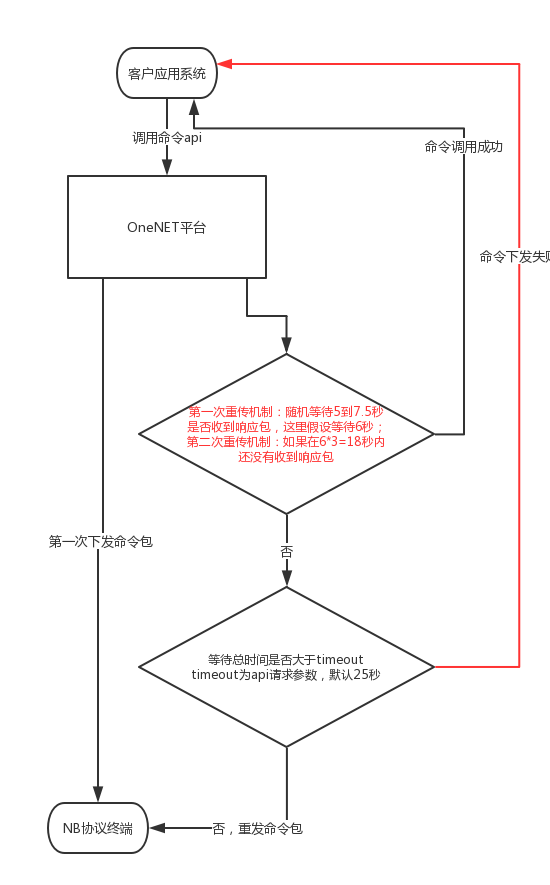
FAQ of NB-IoT-API related questions
1.How to set Api timeout and retry times?
2.What’s the difference between parameter mode=1 and mode =2 in write?
3.When the device is online, it invokes the resource list interface. Why nothing is returned?
4.What is the maximum length of the command issued by the platform?
7.How to trigger a cache command?
| Use of Api of downstream data |
1. 1.How to set Api timeout and retry times?
Answer: The time-out period is 25s by default; this value can be set through Api and the range is 5 ~ 40s.
Example: by default, the time-out period is 25s.
After the first time-out (no reply is received within 5 ~ 7.5s), the platform will have a retry (here, retry means the retry of Coap protocol, namely the internal retry of the platform within the time_out period).
The next time-out period is twice of the first one, so the second retry time is 10s (suppose the first retry time is 5s), and the third time is 20s. Therefore, within the time-out period of 25s, the platform will retry twice at most, and the command will be issued for three times in all.
The time-out period from the application to the device is actually the time-out period from the platform to the device, because the normal communication time from the application to the platform can basically be neglected.
The flow diagram of the above process is as follows:

2. 2.What’s the difference between parameter mode=1 and mode =2 in write?
Answer: The difference consists in that:
- mode = 1 means overlapping operation; all resources and values before will be deleted, and only the resources and values written in currently will be kept.
- mode = 2 means update operation, namely reset or increasing of written-in resources; the resources and values written in before will be kept.
3. When the device is online, it invokes the resource list interface. Why nothing is returned?
Answer: When the platform issues discover command, it will empty the resource list cached; after the device gives a reply, it will continue calling the resources normally.
4. 4.What is the maximum length of the command issued by the platform?
Answer:Currently, it’s restricted to be 2kb.
| cache-command |
5. Is there a limit to the quantity of the downlink instructions cached by OneNET? How many instructions can be cached at most?
Answer: Currently, it’s restricted to be 10.
6. 6.Does OneNet provide API to empty all accumulative cache instructions of a device on OneNET through IMEI?
Answer: At present, it can only be deleted through uuid.
7. 7.How to trigger a cache command?
Answer: The trigger condition of cache command is that there is upling message arriving.
For example, for registration, update, and notify, at present, the type of uplink command triggering the cache command can be set.